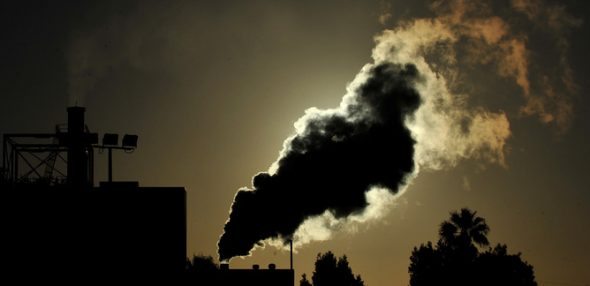
The disaster that is the Coalition government’s climate and energy policy has been underlined by a new report that suggests the proposed National Energy Guarantee will impose an effective carbon price of $35/tonne on industrial sectors.
The analysis from Reputex confirms many assessments that the weak emissions reduction target for the electricity sector that the Turnbull government is seeking to enshrine in NEG will most likely be met by 2020, a decade ahead of time.
With no policy to extract low-cost emissions cuts in electricity, the emphasis will fall on other sectors to meet Australia’s national emissions reductions target of 26-28 per cent.
For the first time, Reputex puts a price on this abatement in other industrial sectors, at $35/tonne – more than 50 per cent more than the fixed carbon price of the Rudd government, and probably four times more than it would have been if the carbon price had remained.
Little wonder that the likes of former prime minister Tony Abbott is using this as a pretext for calling for Australia to follow the Trump administration’s example and quit the Paris climate treaty.
And it is doubly galling to see the main business and industry lobby groups – principally the Business Council of Australia, the Australian Industry Group, the Minerals Council of Australia – argue for such a weak NEG, when it is patently obvious wind and solar and energy efficiency offer by far the cheapest form of abatement.
It was these business groups who called on Abbott to can the carbon price to protect their own short-term interests.
The BCA, for instance, argues on one hand that having a higher emissions target for electricity, and so having more wind and solar, would “wreck” the economy, the same argument they and the AiG used against a $23/tonne carbon price.
Yet now they are calling for a policy that will impose an effective cost of carbon on their sectors far higher than could ever have been imagined with the formal carbon price. Reputex puts the cost to industry at $10 billion over the 10 years, and this will flow through to consumers.
And according to The Australian, while Abbott is calling for Australia to pull out of the Paris climate treaty, the Nationals have put together a proposal to have not one, but three new coal fired generators built by a government owned entity.
It all beggars belief, but then pretty much everything does when it comes to climate and energy policy with this government, and Australian industry, and their regressive attitude to climate science and renewable energy technologies.
Global investors are all in on renewable energy. This idiocy will make them question why they would invest in Australia https://t.co/JhVh19D1Tg via @FinancialReview
— Kane Thornton (@kanethornton) July 3, 2018
RepuTex says a 26 per cent target for the NEG, which the Coalition has refused to move and wants to lock in so it can’t be changed, would leave a shortfall of around 500 million tonnes of abatement to meet Australia’s national emissions reduction target.
To “fill the gap” to the target, RepuTex forecasts that the Australian carbon price may rise to $35/t in 2030, with industry – notably high emitting energy, materials and industrial companies – bearing the brunt of the higher abatement cost.
“With the electricity sector locked into the NEG, other sectors – particularly large energy, materials and industrials facilities – will be called on to fill the gap to 2030”, says Hugh Grossman, executive director at RepuTex.
“As this occurs, we expect carbon contract prices to rise to $35/t in 2030 – more than double current levels – behind the need for more expensive abatement from industry.”
Grossman notes that, unlike the electricity sector – which has a range of low-cost emissions reduction opportunities available to it, mostly cheap wind and solar – abatement is far more expensive for large energy users.
“In relying heavily on external abatement sources, such as Australian Carbon Credit Units (ACCUs), we see the cumulative cost to industry at around $10 billion to meet Australia’s 2030 target.”
Meanwhile, the electricity sector would exceed its 26 per cent target under business as usual, because of wind and solar contracting and existing construction commitments.
“The NEG will therefore be relatively light touch, with minimal emissions reduction costs under the scheme,” he said. This analysis agrees with assessment by ITK’s David Leitch, Green Energy Markets, and many others.
Grossman says the international carbon price is likely to go beyond the Australia price and rise to the equivalent of $A50 by 2030, but that’s because countries in those markets have more ambitious targets.
“While international carbon units are historically perceived as ‘low cost’, we see carbon prices in Europe and California growing beyond A$50 by 2030 as those markets seek to meet increased emissions reduction commitments” Grossman said.
“This type of forward curve is the new normal for international prices, as more abatement is needed to meet stricter targets.”
He said Australia needed policy certainty, but it doesn’t have any. “This is the elephant in the room that policymakers will struggle to avoid much longer”, he said.








